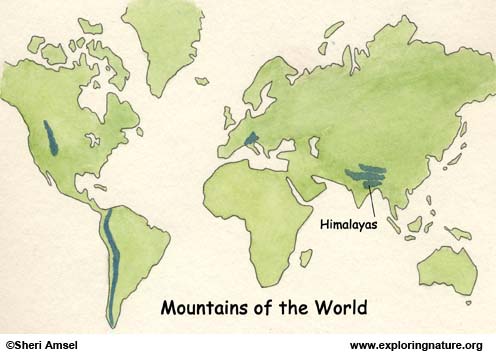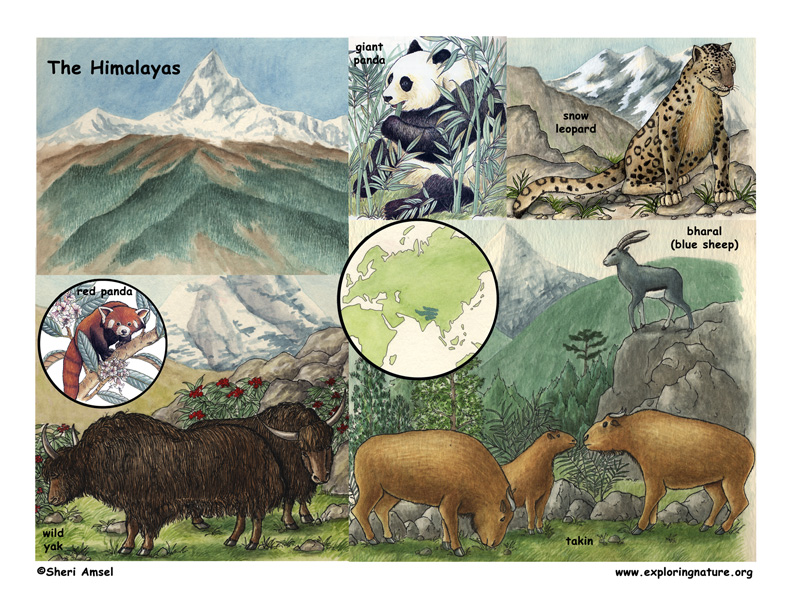

The Himalayas are the highest mountains in the world and they continue to grow. They are actually made up of several ranges running next to each other stretching 1,500 miles across southern Asia. The highest mountain in the world, Mt. Everest, stands between Tibet and Nepal at 29,028 feet. But one of the most spectacular mountains to view is the Annapurna. The most eastern Himalayas are mountains of Szechwan.
The Himalayas rise from a tropical base. As they do so, the landscape changes. Their summits form a great barrier running roughly east to west. The dry uplands spread north in Tibet. Though the Himalayas are remote and difficult to get to, many people still come to trek or climb these spectacular mountains. The sherpa -- people who live here and work as farmers and porters -- carry the baggage of climbers up the great peaks. Many visitors, as well as local peoples, have caused a huge loss of trees, which are cut down and used for firewood.
The bamboo forests on the lower slopes are home to the giant panda, a species on the decline. The dense rhododendron thickets hide the lesser panda (or red panda). Curled up to sleep during the day, the lesser panda descends at night to eat bamboo, grasses, and small animals. High in the mountains small groups of takin browse. At the highest point between timberline and snowfields, bharal or blue sheep graze on open rocky slopes. Their blue-gray color hides them on the rocky hillsides of shale. Farther north huge yaks and tahr travel in herds searching for food. Tibetan gazelles also graze here. In the high mountains of Nepal, the snow leopard hunts blue sheep. The snow leopard blends so well with its surroundings and is so secretive that it is rarely seen by humans. Still, it is hunted eagerly for its soft, silken coat. No one knows exactly how many snow leopard are really left, but it is hoped that their isolation will help to preserve this beautiful, endangered animal.
High up are scrubby spruce and pine. Then come the dense rhododendron thickets. On the lower slopes there are bamboo forests. Dwarf rhododendron grow on rocky slopes of the Tibetan plateau. Farther north, the vegetation is more meager with sparse Himalayan birch and pine.
When you research information you must cite the reference. Citing for websites is different from citing from books, magazines and periodicals. The style of citing shown here is from the MLA Style Citations (Modern Language Association).
When citing a WEBSITE the general format is as follows.
Author Last Name, First Name(s). "Title: Subtitle of Part of Web Page, if appropriate." Title: Subtitle: Section of Page if appropriate. Sponsoring/Publishing Agency, If Given. Additional significant descriptive information. Date of Electronic Publication or other Date, such as Last Updated. Day Month Year of access < URL >.
Amsel, Sheri. "Himalayas" Exploring Nature Educational Resource ©2005-2024. December 13, 2024
< http://exploringnature.org/db/view/1724 >

